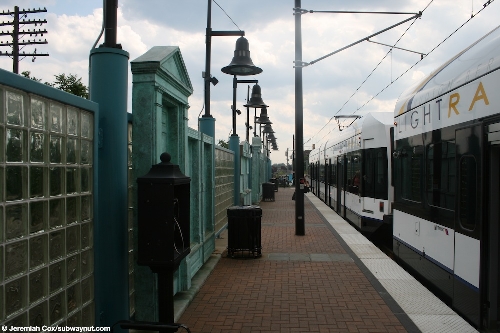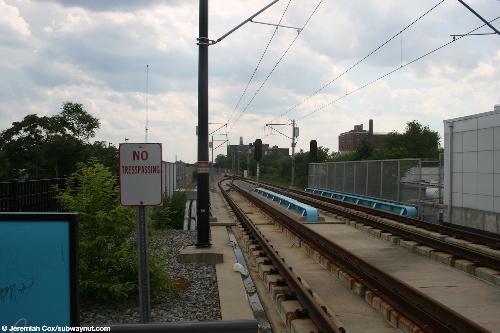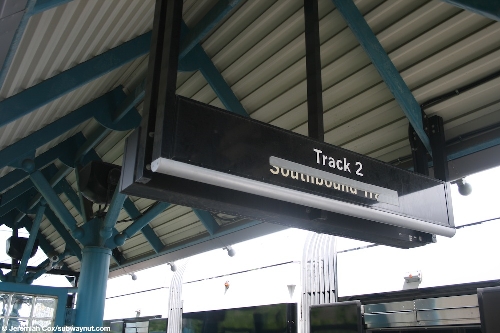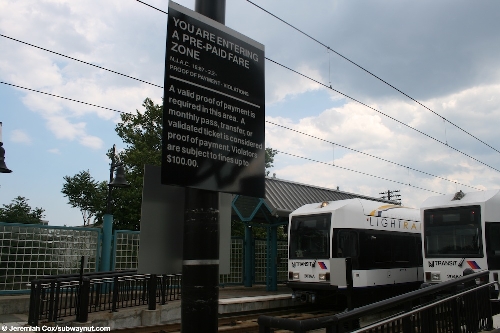22nd Street was the terminus of the HLBR between its opening, as a single station extension on November 15, 2003 to the opening of 8th Street on January 31, 2011. The station itself has two side platforms, and when the station was a terminus trains departed from either track, reversing at a crossover north of the station. South of the station the two tracks continue for a bit before switching into one track (that once ended at a bumper block before the 8th Street extension opened). When the station was a terminus trains could be in theory reversed beyond the station but this wasn't normally done. The tail tracks simply used for short-term storage. This single track has now been extended as a single track extension south to 8th Street, but some rush hour trains still continue to originate and terminate here at 22nd Street because of the operational constraints posed by the single tracked.
The station is located on a private ROW in a shopping area of Bayonne. Local streets pass underneath the ROW with very low, ~11 foot clearance tunnels. A freight track is adjacent, running along the east platform of the station and includes a track that is along the HBLR ROW north of the station. The two side platforms each have a single normal HBLR canopy. The northbound track has a full length wall of semi-opaque glass bricks, forming a windscreen between it and the parallel freight track. Etched in these bricks are etched silhouettes of Bayonne's industrial architecture by Kate Dodd. Along this east platform for the bound track glass wall are Doors and Windows of Bayonne by Lisa Kaslow. These consist of actual fiberglass, copper and patina doors models of doors and windows from architectural details of Bayonne. The southbound platform has its own more colorful glass windscreens (although portions of this platform on an embankment have a simple, low fence) Bayonne Time & Tides by J. Kenneth Leap showing the history of Bayonne through photographs and maps. The glass windscreens in the shelters have etchings by Kate Dodd of Bayonne's industrial past.
To leave the station there are pedestrian grade crossings at each end. Both entrances only connect directly to the southbound platform, and have a small canopy with TVMs and validators (making the platforms a fare paid zone) next to the grade crossings. At the northern end of the station a staircase only leads down to the south sidewalk of 22nd Street between Avenue E and Prospect Avenue. The southern end contains the elevator for ADA access (with a brick enclosure) and a staircase down to 21st Street.
Photos 1-19: June 14, 2008; 20-28: February 15, 2013



